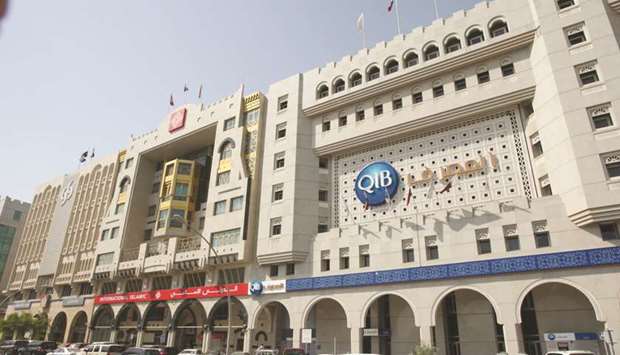The balance sheet of Islamic banks in Qatar grew to nearly $90bn in 2019 compared with $82.6bn in 2018, a report by S&P Global Ratings has shown.
In 2013, it stood at $48.8bn, and $58.9bn in 2014, $68.9bn (2015), $75.2bn (2016) and $82.3bn in 2017.
Islamic banks in Qatar are QIB, QIIB, Masraf Al Rayan, Barwa Bank and Qatar First Bank – regulated by the QFC Regulatory Authority.
According to S&P, although growth rates last year were almost the same as in 2018, GCC conventional banks saw faster increases than Islamic banks. This was mainly explained by acquisitions.
“In 2020, we expect slower organic and non-organic growth, with Islamic and conventional banks seeing similar rates of 2%-3%,” S&P noted.
S&P projects that average real GDP growth for the six GCC countries will slightly accelerate in 2020 compared with 2019, but this will be primarily spurred by higher oil production.
With the significant decline in oil prices, S&P’s assumption for 2020 is now an average of $30 per barrel, down from $60 at the start of the year. Due to government measures to contain the spread of Covid-19, the rating agency thinks that non-oil growth will decline. This, it said’ will result in “fewer growth opportunities” for banks.
“We also expect banks to focus more on asset-quality indicator preservation than generating new business. In our forecasts, we assume that measures implemented by the GCC governments to contain Covid-19 are relatively short lived. If this assumption does not materialise, the effect on their economies and banking systems would be stronger than we currently forecast.
“This risk is exacerbated by delays or cancellations of important events scheduled in the region,” S&P said.
Lower economic growth and significant shocks to vital economic sectors such as real estate, hospitality, and consumption mean that GCC banks’ asset-quality indicators (both Islamic and conventional) will deteriorate in 2020, the rating agency noted.
By end-2019, the average nonperforming financing (NPF) ratio reached 2.8% for Islamic banks compared with 3% for conventional banks in its sample (S&P does not see much significance in the slight difference).
The coverage ratios were also comparable at 155.5% for Islamic banks and 154.6% for conventional banks at the same time.
For 2020, S&P thinks that NPF ratios could easily double, and cost of risk could reach 1.5%-2.0% of total loans.
Moreover, S&P believes that most of the deterioration would come from small and mid-sized enterprises (SMEs) and companies operating in the real estate, hospitality, and consumer-related sectors.
“In our assumptions, we factor the measures decided by GCC governments to support their economies. Although these measures are helpful, they will primarily give banks time rather than resolve problems related to lost activity of clients with cash flow pressure.
“In our view, recapitalisation or stronger measures to alleviate pressure on clients’ bottom lines could make a difference, but there are no indications that governments will move in this direction,” S&P noted.

The balance sheet of Islamic banks in Qatar grew to nearly $90bn in 2019 compared with $82.6bn in 2018, a report by S&P Global Ratings has shown



